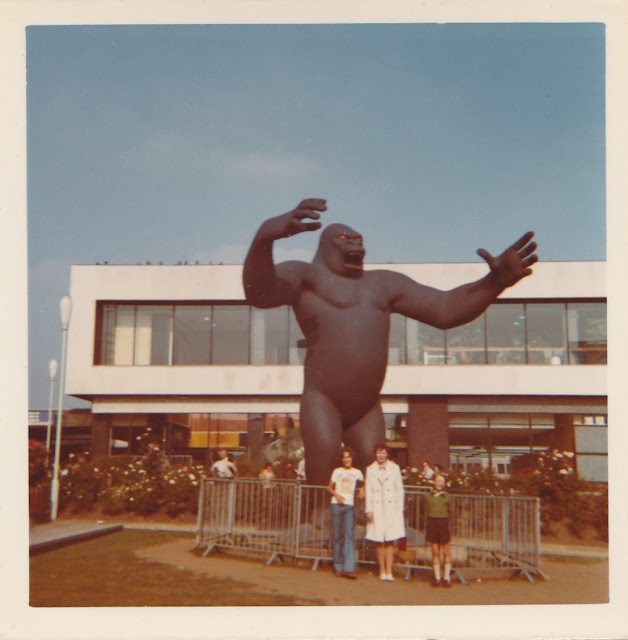Technically I'm a Brummie.
I say technically, because I was actually born in the black country, an area of industrial Britain, which has much in common with Birmingham, but is fiercely protective of its separate identity .
We moved into what is now Birmingham when I was 4, and I lived most of my formative years there, until moving onto university. It wasn't however Birmingham when we moved, but the Conservative caliphate of Royal Sutton Coldfield (Emphasis on the Royal). It was a largish town on the edge of Birmingham consisting of large bustling town, the huge area of open parkland called Sutton Park, multiple hidden private roads containing the mansions of the rich and famous, and us. At the time it felt like joining a exclusive club. Every year, as residents, we received car stickers that allowed us free entry into the park (and bizarrely permission to collect Holly), while the common folk of Birmingham, just over the border, were made to pay like the plebs they were :)
That all stopped in 1972, when the conservative members of the local council (that is to say the entire council) decided to merge with Birmingham. So no more car stickers and overnight I became a Brummie. (Why is still a bit of a mystery, and I have never met anyone who lived there at the time who thought it was a good idea. The best explanation was that at a stroke, the conservatives added a block of tory Councillors onto the otherwise left leaning Birmingham council).
During my childhood and adolesence, although only 30 minutes away by train, Birmingham itself felt distant and disconnected from me. We may go in once, twice a year to Birmingham and therefore was a big event. Birmingham of the 70's and 80's it had to be said was not exactly a great place to go. The centre was dominated by the Bull Ring shopping centre, plonked on top of the architectural disaster that was New Street train station. My memories of it are of a labyrinth of dim passages, spreading out in a haphazard way. It is said when they knocked it down to build the present shopping center, they found Japanese soldiers hiding since the 2nd world war, who found better cover than jungles and could pop into top shop once in a while for some camouflage chic..
Our visits had a bit of a ritual assocated with it. It usually started with a trip to Habitat. Habitat was a store famous for selling designer furniture. This was before IKEA came along and showed that you could furniture could be well designed and low price. We never bought anything there, instead we just went in to stare at the masses of white formica.
The other shop we ended up in was Mikado, a shop which for some reason specialized in selling Japanese objects. Never sure how it ended up in deepest Birmingham and the only thing I can remember buying all were incense sticks, which never were used. Then there was Beatties, the giant model shop, where I would spend my time nose pressed up at plastic kits I could not afford. Finally, just outside the bull ring was Hudson's bookshop, a giant sprawling mass of literature, where I spent many a happy an hour perusing the shelves.
Apart from the 70's retail experience, the other reason for visiting was the two museums, the Natural History and Art museum and the science museum.
The art museum is still based near the council offices, and we were often dragged their by my mother because she was doing a art degree and she had a thing for the Pre-Raphelite Brotherhood, which rather fortuitously Birmingham art gallery is famous for. However at the time the main attraction was always the full size fibre glass T-Rex with a button that made to raw(this was as close as we ever got to animatronics then)
The science museum used to be based at the Gas street basin, a nexus of canals which at the time was pretty ugly and polluted. (someone at this point mentions that Birmingham is that it has more canals than Venice. This is true in the same way that Malawi has more mosquitoes than Brixton ). I really loved the science museum, with its strange eclectic mix of old machines and modern technology. I especially loved and was fascinated by a mechanical turk, with which you could play fox a geese. It is one of my 1st memories of automation, and may well of set my path to where I am today.
Unfortunately the museum is no more, with most of the exhibits being subsumed into the Millennium point, where you can pay a huge amount to watch your kids press buttons for half an hour. The exhibits still exist, but they are hidden on the bottom floor which is a great pity because they define why Birmingham came to be.
Ok you may ask, apart from the major nostalgia kick, why am I telling you my life story?(yes why? - ed).
Well, Birmingham has in recent years gone through a bit of a Renaissance. A lot of the architectural excesses has been torn down and replaced with iconic buildings. More importantly a nascent art scene has started to grow up and photographers such as Verity Milligan,
Ross Jukes, and Tim Cornbill have started to show the city in a new light.
I recently had reason to be in the city, so i thought I would make a day of it. So I thought I would re-visit the city of my youth and re-evaluate it through adult eye. The following blogs are about what I found....

No comments:
Post a Comment